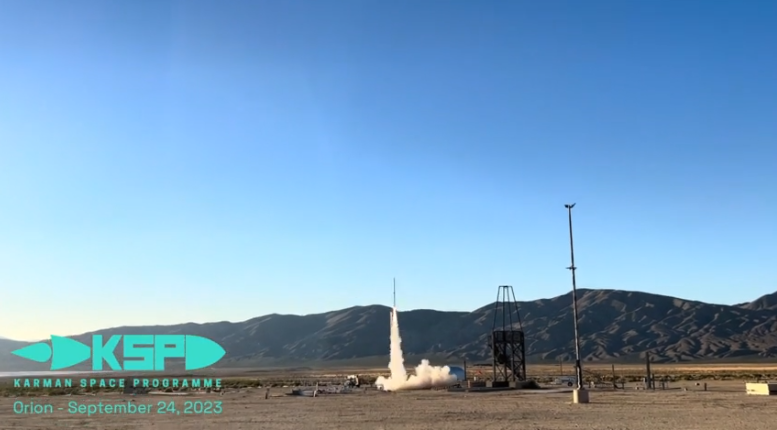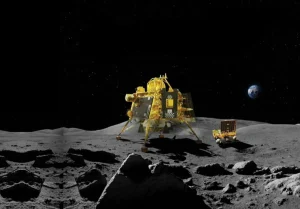UK Students’ Innovative Launch a Success
25th Sep 2023
Students at the Karman Space Programme (KSP) from the Imperial College London have launched the most powerful open-altitude rocket built in the UK to date. To build the rocket, KSP used AI technology to expedite simulations and 3D printing to construct the engine. Now, the reusable rocket, labelled Orion, was launched on 24th September from Mojave, California. Incepted two years ago, the group’s goal is to reach the Karman Line: the 100 km altitude boundary between Earth and Space.
These innovations have piqued interest from various names in the space industry, such as British astronaut Tim Peake and George Freeman, Minister for Science, Innovation and Technology. Regarding the group’s efforts, Mr Freeman said: “to see the next generation of space innovators already pushing the boundaries of UK space technology is remarkable and I wish the Karman Space Programme success after their hard work.
3D Printing & Testing The UKs Most Powerful Rocket Engine
KSP’s reusable two-stage rocket houses the most powerful non-government and non-commercial open-altitude engine. The student team metal 3D printed the engine, which boasts 40kN of thrust. Orion’s launch will take place in Mojave, California, with livestreams expected on their social media channels.
The team have also been busy completing their other rockets: Vega and Aurora, with launches planned for spring and summer 2024. KSP’s first launch was in July, 2022, when their Nebula rocket successfully lifted off the launch pad. By using innovative techniques to build their arsenal of reusable rockets, KSP aspires to become “the first student-led team to reach Space using a reusable liquid propellant rocket.”
Comparing KSP’s Rocket To Other 3D Printed Rockets & Engines
Although Orion has the most powerful student-built engine, other commercial space companies are utilising 3D printing to design comparably dynamic rockets and engines. Scottish rocket manufacturer Skyrora has previously 3D printed a 70 kN engine, and in 2013, NASA built and tested their 3D printed engine that has 20,000 tonnes of thrust.
The University of Sheffield also broke records with their 3D printed liquid rocket engine that was up until now, the UK’s most powerful student-built engine. Relativity Space took it a step further by constructing an entirely 3D printed rocket called Terran-1.
Nevertheless, Minister Freeman said: “initiatives like these show just how transformative partnerships between academia and industry can be in reshaping the landscape of UK space exploration. As demonstrated globally, the adoption of reusable rocket technology is pivotal in significantly lowering space launch costs and propelling the UK towards a leading role in the space arena.”







Thank you for your comment! It will be visible on the site after moderation.